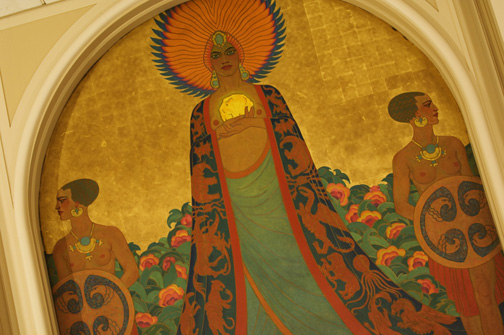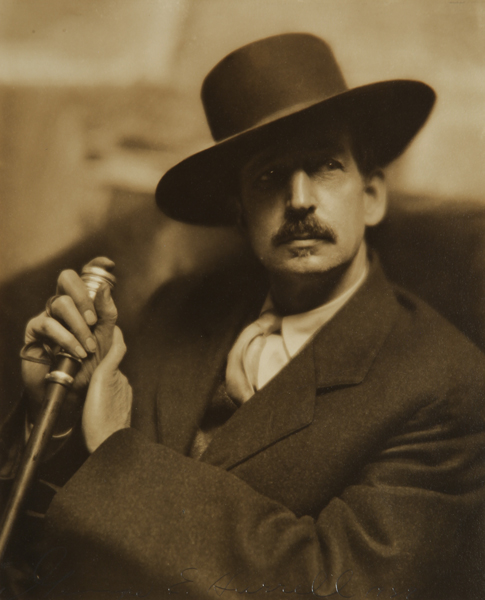Half-measures availed us not!
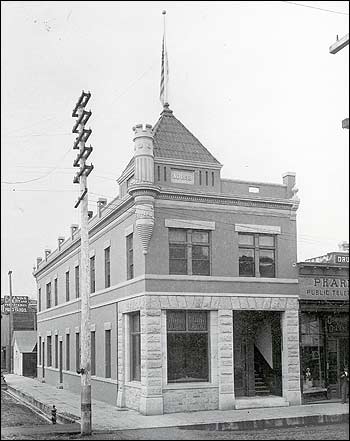
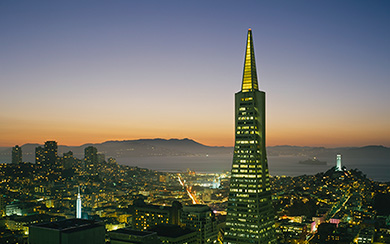
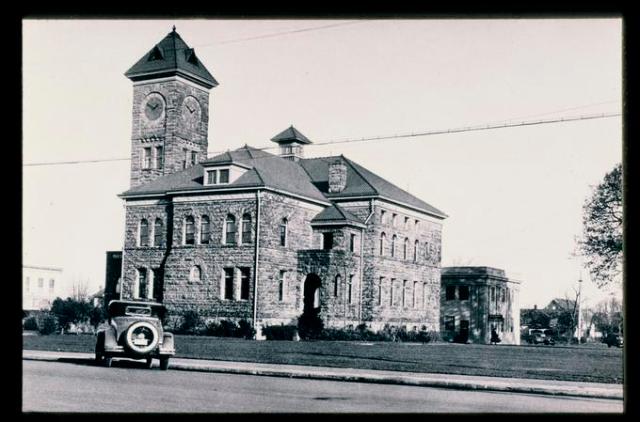
Come April 7, 2017, I will have thirty years sobriety. I am a graduate of the New Hope Program at Serenity Lane when it was on 16th. At every AA meeting we heard someone, including oneself, read this:
“Half measures availed us nothing. We stood at the turning point. We asked His protection and care with complete abandon.
Here are the steps we took, which are suggested as a Program of Recovery: We admitted we were powerless over alcohol-that our lives had become unmanageable.”
Donald Trump may be on what we call a ‘Dry Drunk’. I do not think he is a drinker. How about his father? Wherever he gets it from, all Americans, and half the world, is on the brink of disaster. The same can be said of Downtown Eugene, as long as I can recall. In 1970 I got off the train and stretched my legs for twenty mnutes. I was on my way to Seatle to be with my lover I met camping in California. There was a coffee shop near the station with a hippie playing his guitar in the window. I was overcome with serenity and made a note that I would live here some day – God willing!
When I saw the old photo of the Hendricks Bank, I smiled, for this was the most perfect example of taking half-measures to beautiful downtown. The Romanesque turret – is a scream! This add-on facade fooled no one. It was a cheap version of what Col. Delos D. Neer is capable of. The Colonel made building to last – forever! As I dig deeper into the Mystery Spot that is Eugene Oregon, I will probably find an article on how much the citizens hated the Armed Romeo and Juliet Machine Gun Turret, and had it ripped off, along with the faux stonework. I , the Great Karnac, can read this Forever paragraph:
“Mr. Hendricks spared no expense when it came to erecting those Gothic Cathedrals for those rich kids whose parents can afford to send their brats to college. Were’ talking about Logger’s Son having to learn while they sit in the dirt!”
Did I nail it, the tired old and useless complaint?
Trump does not spare the rod. He is at war with Queen Calafia, who may be the Marianne of the West Coast, the fearless leader of ‘The Lost Land of the Bohemians’. I might meet with a beautiful young reporter, and make her my Bohemian Heir. I am the Caretaker of the Rosamond, Stackpole, Benton, Weston, and, Habsburg legacy, that have their roots in the old Monkey Block building that was torn down, and replaced with the TransAmerica Corporation pyramid that bought up Hendrick’s bank, the First Interstate Bank of Eugene
Note the pyramid sitting atop the Colonel’s fakery. Did you know Eugene had a pyramid? But, maybe, that’s just s SHORT CLOCK TOWER – without clock! We are treated to the hint of a tower. The higher the profits, the higher the tower – rises! When the going is good, the people begin to see the clock, but, not the whole clock. The markets have risen all over the world since the FBI dropped its case against Hillary. The builder of Trump Towers is obsessed with this architectural drama. Mr. Monopoly owns Park Place and Boardwalk, but, not a GIANT HABSBURG!
My father’s school chums Skip Sutter, and Tom McKinney, sat atop the SF pyramid, and were dismissed for fraud. The First Interstate Bank is at 99 Broadway, three blocks from Kesey Square where SLEEPS conducted fake Art Happenings. I tried to give Eugene, and Springfield, the people of the Monkey Block, to do with as they will. I am ignored. Only Thomas Hendricks had a clue. Is that turret a replica of Lady Liberty’s torch? And, then the mayors and the city council wonder why downtown has been taken over by Un-grateful Bums. We can never give them too much money, just like our city planners.
Is that a pole with telephone wires? Very modern, Very high tech! And Trump is going to rebuild America? He doesn’t have a clue how much Tom foolery that took – the first time!
C’mon you Hayseeds and Cloggers, let’s do the Old Stomp Around the Colonel’s Clock that Hendrick swore the people would never tire of. Meanwhile, we all need a loan, at least one.
Jon Presco
o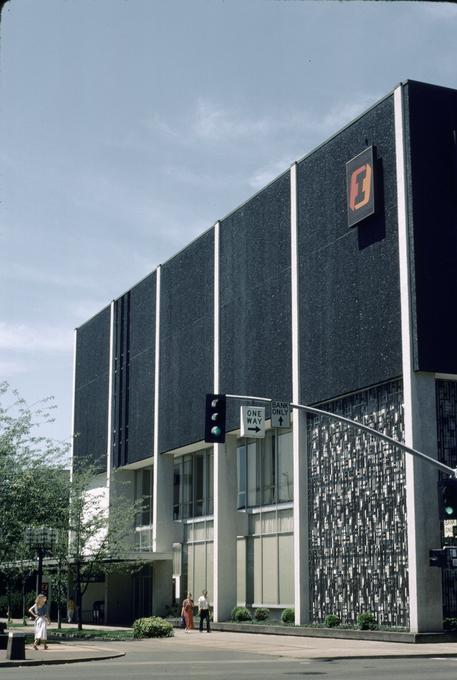

This morning I awoke with the realization I am the Caretaker of the Creative Stackpole Family History, because they have passed away, along with a good friend of the family, Michael Harkins. Michael told me stories about Ralph Stackpole. He told me how his grandson, Peter Stackpole died. He was camping on the American River when he spotted an eagle feather floating by. He dove in for it, and never came to surface. Peter’s father is the son of the LIFE photographer who took the photos of Joan and Christina Crawford. Peter took the pic of Joan chatting with the infamous artist, Salvadore Dali.
http://www.sfgate.com/news/article/Broker-defends-loan-to-widow-3124721.php
http://en.wikipedia.org/wiki/Ralph_Stackpole
https://en.wikipedia.org/wiki/Calafia
Stackpole worked as a laborer early in life to support himself and his mother following the death of his father in a lumber mill circular saw accident.[3] At sixteen, he came to San Francisco to study at the California School of Design beginning in 1903; he was influenced strongly by Arthur Frank Mathews, muralist and painter at the school. He met painter Helen Arnstein (later Helen Salz) while both were teenagers, and she became his first girlfriend. Arnstein, the daughter of wealthy Jewish art lovers and one year Stackpole’s senior, described him as “a remarkable draftsman” who painted and sketched constantly.[4] She was less impressed with his sense of color than with his precision in line. Stackpole polished his craft by working with artists at the Montgomery Block, playfully called “Monkey Block”, a bohemian hangout which included studios for painting and sculpture.
The Montgomery Block was San Francisco‘s first fireproof and earthquake resistant building, which came to be known as a Bohemian centre from the late 19th to the middle of the 20th century. It was located at 628 Montgomery Street, on the south-east corner of its intersection with Washington Street, today the location of the Transamerica Pyramid.
The four-story building was erected in 1853 by Henry Wager Halleck, later general in chief of the Union Army in the Civil War, in the “Barbary Coast” red-light district.[2] As locals endearingly refer to it, the Monkey Block was for a hundred years headquarters for many outstanding lawyers, financiers, writers, actors, and artists. Its tenants included artists and writers of all kind and it also hosted many illustrious visitors, among them Jack London, George Sterling, Lola Montez, Lotta Crabtree, Gelett Burgess, Maynard Dixon, Frank Norris, Ambrose Bierce, Bret Harte, the Booths and Mark Twain. The site of Montgomery Block is now registered as a California Historical Landmark.[1]
In the 1860s Mark Twain met a San Francisco fireman named Tom Sawyer in the Montgomery Block sauna. It was home in 1911 to exiled Dr. Sun Yat-sen who, working with Wong Sam Ark, wrote the Chinese constitution that was later installed after the fall of the Qing Dynasty.
Lawrence Ferlinghetti mentioned “the classic old Montgomery Block building, the most famous literary and artistic structure in the West” in his 1998 inaugural speech as Poet Laureate of San Francisco.[2]
The Montgomery Block was demolished in 1959, even though a preservation movement had begun to emerge in San Francisco. It is remembered for its historic importance as a bohemian center of the city. The Montgomery Block was replaced by a parking lot and later, the Transamerica Pyramid.
http://foundsf.org/index.php?title=The_Monkey_Block
https://en.wikipedia.org/wiki/Coit_Tower
Calafia is a warrior queen who ruled over a kingdom of Moorish women living on the mythical Island of California. The character of Queen Calafia was created by Spanish writer Garci Rodríguez de Montalvo who first introduced her in his popular novel entitled Las sergas de Esplandián (The Adventures of Esplandián), written around 1500.[1]
In the novel, Calafia is a pagan who is convinced to raise an army of women warriors and sail away from California with a large flock of trained griffins so that she can join a Muslim battle against Christians who are defending Constantinople. In the siege, the griffins harm enemy and friendly forces, so they are withdrawn. Calafia and her ally Radiaro fight in single combat against the Christian leaders, a king and his son the knight Esplandián. Calafia is bested and taken prisoner, and she converts to Christianity. She marries a cousin of Esplandián and returns with her army to California for further adventures.[2]
Col. Delos D. Neer,
|
Aug. 13, 1847 |
|
| Death: |
Nov. 17, 1919 |
The son of Charles Neer and Levantia Schemerhorn. Mr. Neer was Union Civil War veteran who enlisted at East Worcester, New York, in the Third New York Cavalry, and was forwarded to the recruiting rendezvous at Hart’s Island, where, because of misplaced papers, he was attached to Company K, One Hundred and Thirty-third New York Infantry, Third Brigade, First Division, Nineteenth Army Corps, Department of the Potomac, under command of Gen. Phil Sheridan. He engaged in the campaign of the Shenandoah Valley during 1864 and 1865, and after the war closed passed through the grand review at Washington, was discharged at Hart’s Island, and from there started home. Mr. Neer was married near Binghamton in the fall of 1869, to Miss Alfrelia Collins, a native of that locality. They had two children, neither of whom survived infancy, and in 1873 Mrs. Neer died. In February, 1879, he removed to Portland, and about this time conceived the idea of applying himself to architecture as a profession. This he successfully accomplished, and in 1880 opened an office in East Portland. Mr. Neer’s second marriage occurred in Oakland, California, in October, 1877, to Miss Kate L. Saunders, a native of Missouri. They have three children: Helen R., Harry W. and Bessie L. Mr. Neer is deeply interested in the G. A. R., and it was through his efforts that Sumner Post, No. 12, was organized in 1881 [sic]. He was elected the first Post Commander. For two years he has served as Inspector for the Department of Oregon, and for the same length of time as Assistant Inspector on the staff of the Commander-in-chief of National Organization. He has been a member of the A. O. U. W. for eleven years, and is now a Past Chancellor of Phalanx Lodge, No. 14, K. of P., and last, but not least, is prominently identified with Portland Lodge, No. 142, B. P. O. E. |
|
http://npgallery.nps.gov/pdfhost/docs/NRHP/Text/98001122.pdf
http://www.eugeneweekly.com/2010/02/11/news2.html
https://www.flickr.com/photos/courthouselover/7737629746
https://www.transamerica.com/individual/about-us/who-we-are/history/
History
Our Beginning
In 1904, a young entrepreneur named Amadeo Giannini created the Bank of Italy in a converted San Francisco saloon. His goal was to make financial services available to everyone — not just the wealthy few. And so he did; after the 1906 quake and fire, Giannini set up a makeshift bank on the San Francisco docks, giving residents loans to rebuild, secured with only a handshake .
In 1928, Giannini merged with Bank of America, and in 1930 acquired Occidental Life Insurance Company through Transamerica Corporation. The banking and life insurance businesses separated in 1956, with the latter taking the Transamerica name. And in 1972, the now iconic Transamerica pyramid claimed its place in the San Francisco skyline .
Changing Times
A flurry of creativity and acquisition activity in the 1960s and 1970s resulted in Transamerica owning interests in not only life insurance and financial services, but also motion picture distributor United Artists, Trans International Airlines and Budget Rent A Car.
In the mid-1980s, Transamerica refocused its core business on its founding mission of making insurance and financial tools available to more people. And in July 1999, Transamerica began a new chapter in its history when it became part of one of the world’s leading international financial organizations: Aegon N.V.
Modern Day
Today, the Transamerica companies are as committed to helping people as we were 100 years ago. Customers now have access to an even wider range of services, from life insurance to retirement plans, to secure their financial futures.
From our very beginning we’ve been committed to helping you build a solid financial foundation for now and the future. And we’ll continue to do so with insurance and financial products that are as affordable as they are exceptional.
We were here for your parents and grandparents. We’re here for you now.
https://en.wikipedia.org/wiki/Transamerica_Corporation
Aegon N.V., a big Dutch company that has been on a shopping spree in the fiercely competitive life insurance business, said today that it was buying the Transamerica Corporation of San Francisco for $9.7 billion in cash and stock.
Aegon, a diversified concern that is principally an insurer, will also take on $1.1 billion in Transamerica debt. With the acquisition, Aegon said, it will become the third-largest life insurer in the United States in terms of assets and premiums. The deal also reinforces its standing as the third-largest insurance company worldwide in market capitalization.
Transamerica, which is the sixth-largest life insurer in the United States, will be merged with the insurance business of the Providian Corporation of Baltimore, which Aegon acquired for $2.6 billion in 1997. The companies said the Transamerica name and logo would be retained ”wherever appropriate,” and would be extended to some of Aegon’s products in the United States.
The Transamerica Pyramid, a San Francisco landmark will remain part of the combined companies, along with Transamerica’s leasing, real estate and commercial lending units.



